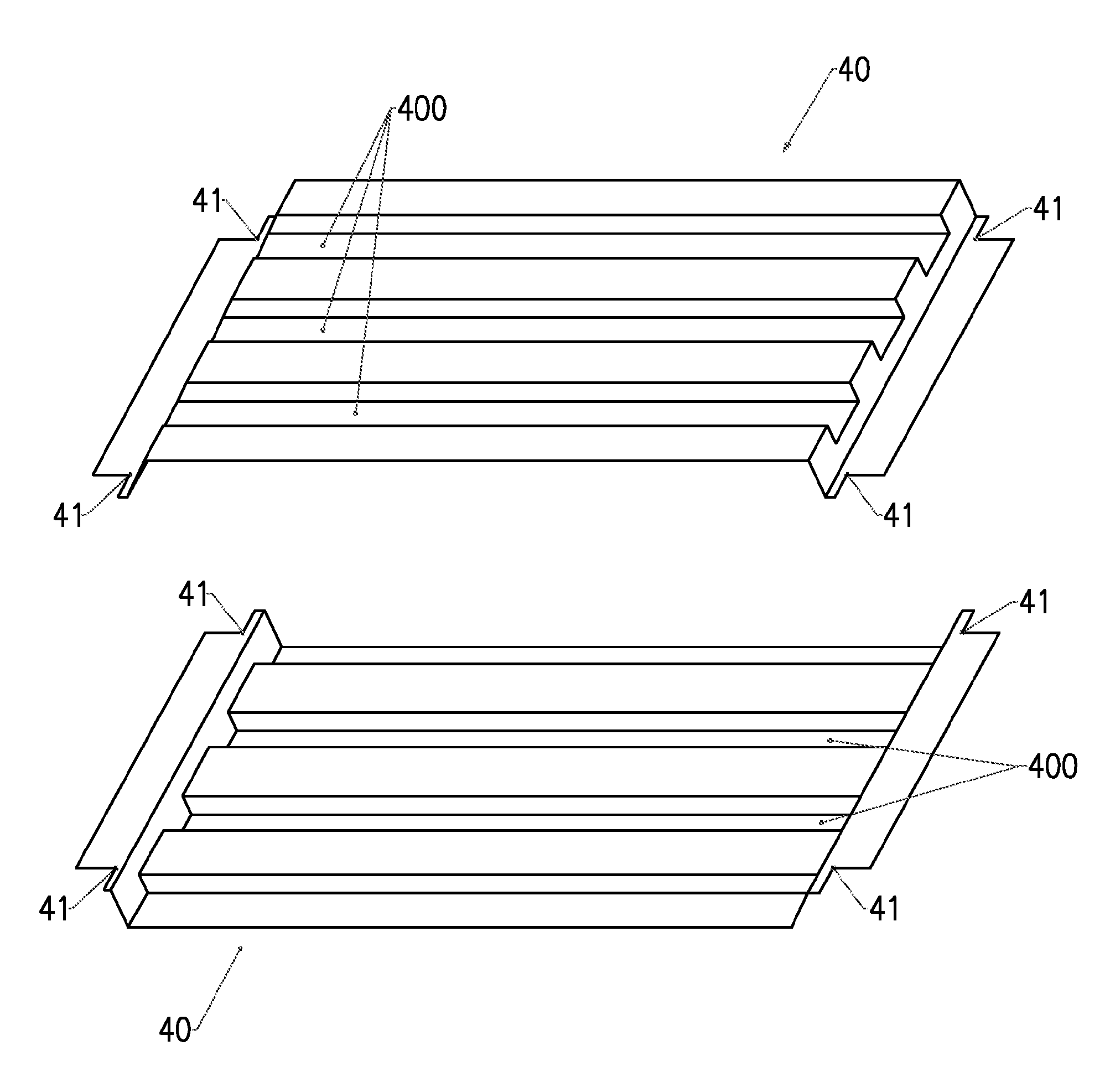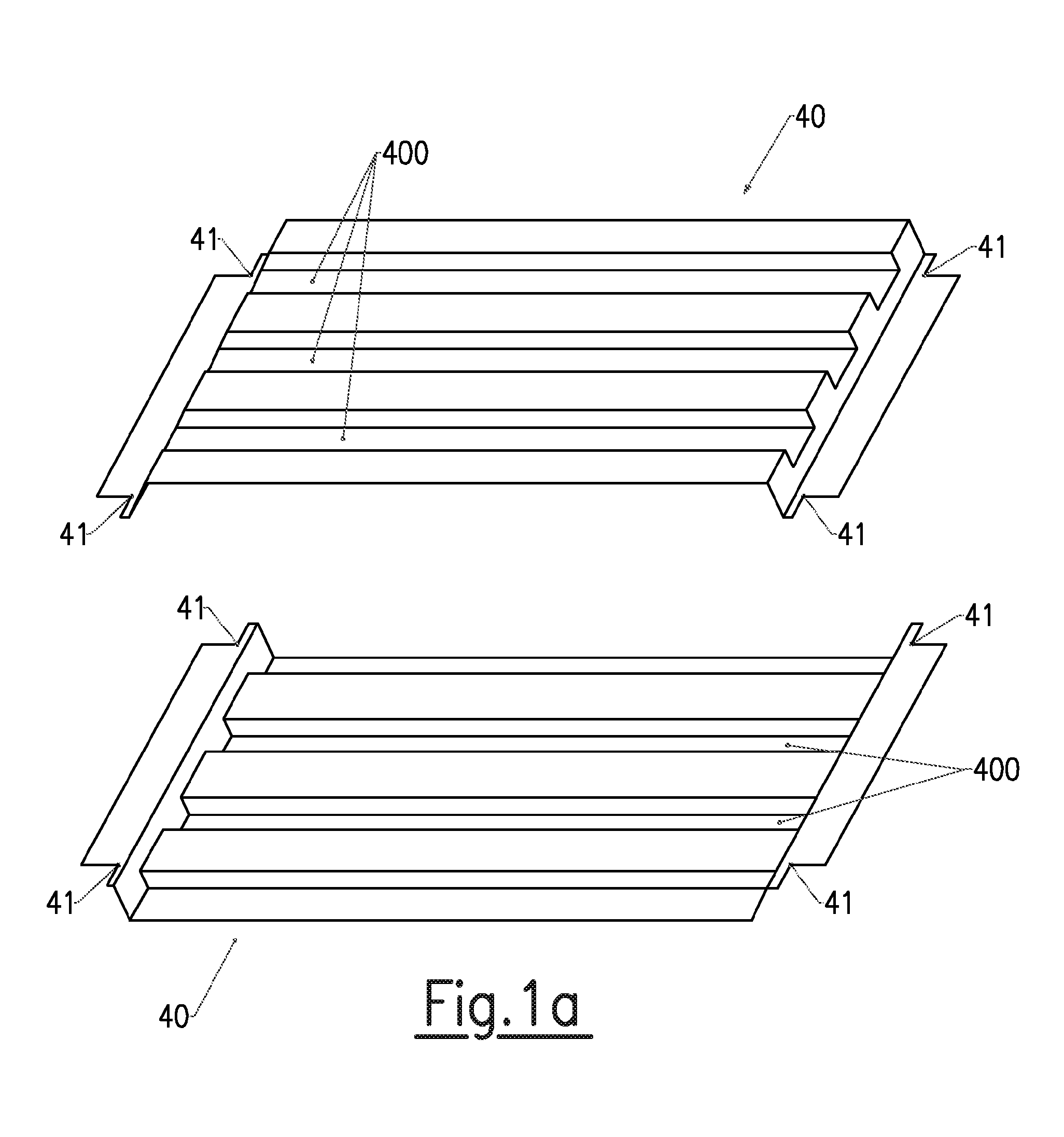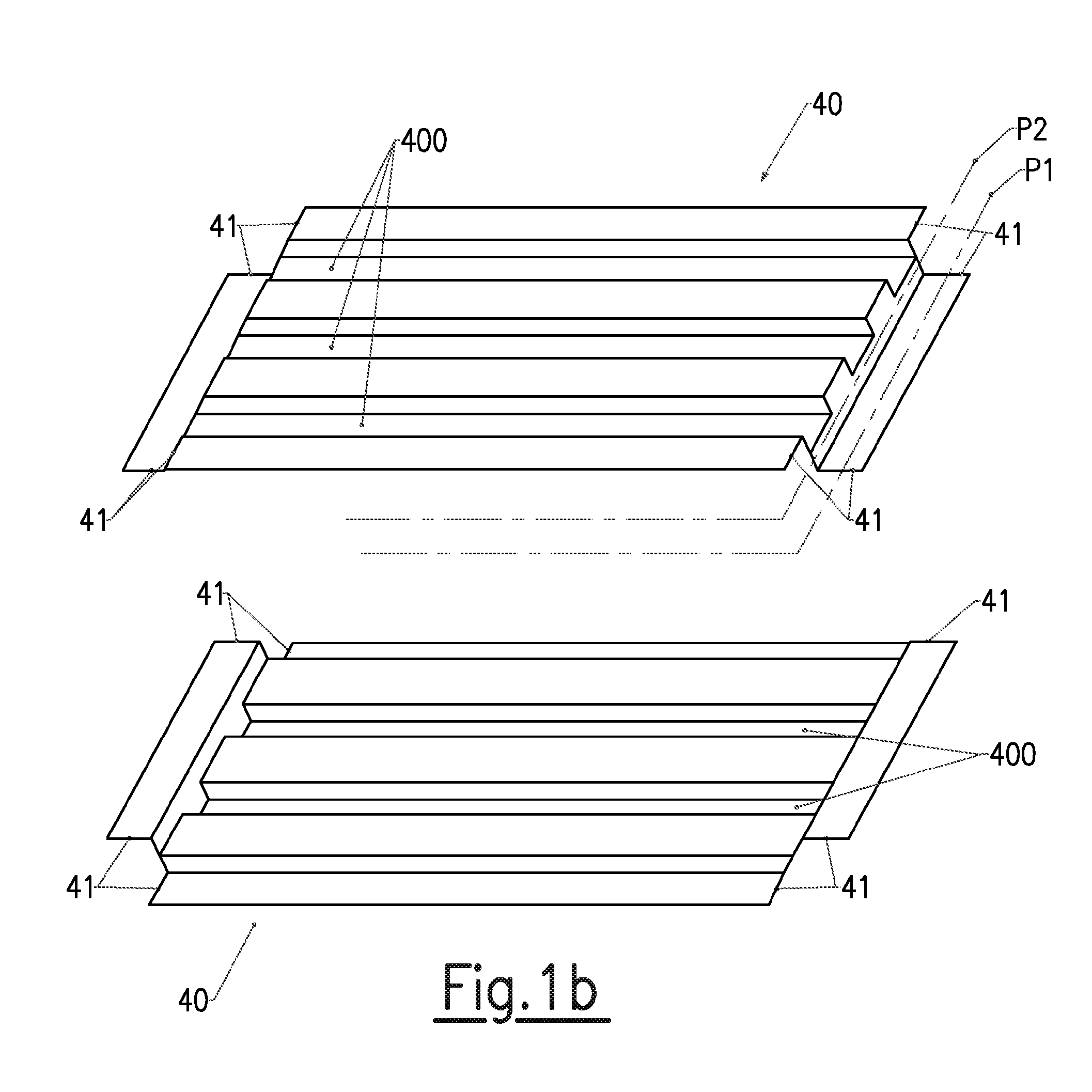Heat exchanger with welded plates
a technology of heat exchanger and plate, which is applied in the direction of stationary plate conduit assembly, lighting and heating apparatus, station tubular conduit assembly, etc., can solve the problems of degrading the stiffness and mechanical strength of the exchanger, affecting the efficiency of the exchanger, and exposing welds, so as to ensure the rigidity of the plate and ensure the mechanical strength of the assembly
- Summary
- Abstract
- Description
- Claims
- Application Information
AI Technical Summary
Benefits of technology
Problems solved by technology
Method used
Image
Examples
Embodiment Construction
[0027]The heat exchanger that is the subject of the invention is of the type comprising a closed chamber inside which are arranged ribbed plates defining between them interpenetrating independent circuits in which fluids are intended to flow, the side walls delimiting said chamber being fixed to vertical rails. This type of exchanger is of the type known to those skilled in the art.
[0028]Referring to the appended figures and in particular to FIGS. 2, 3, 4, 7 and 8, the exchanger has a general parallelepipedal shape with dimensions mainly dependent on the number of stacked plates and the dimensions thereof. Referring to FIG. 2, this exchanger comprises one (or more) modules 1 of plates 40 juxtaposed in roughly parallelepipedal shape, inserted on four vertical rails 10 arranged at the four corners. The number of modules 1 used is dependent on the flow rate of the fluids to be handled. The rails 10 appear in the form of metal poles, hollow or solid, of substantially rectangular section...
PUM
| Property | Measurement | Unit |
|---|---|---|
| length | aaaaa | aaaaa |
| length | aaaaa | aaaaa |
| thickness | aaaaa | aaaaa |
Abstract
Description
Claims
Application Information
 Login to View More
Login to View More - R&D
- Intellectual Property
- Life Sciences
- Materials
- Tech Scout
- Unparalleled Data Quality
- Higher Quality Content
- 60% Fewer Hallucinations
Browse by: Latest US Patents, China's latest patents, Technical Efficacy Thesaurus, Application Domain, Technology Topic, Popular Technical Reports.
© 2025 PatSnap. All rights reserved.Legal|Privacy policy|Modern Slavery Act Transparency Statement|Sitemap|About US| Contact US: help@patsnap.com



